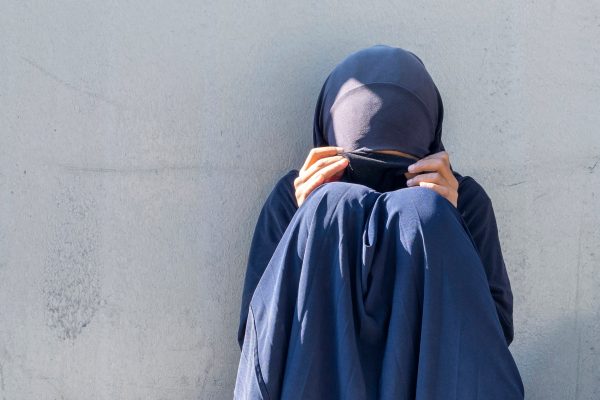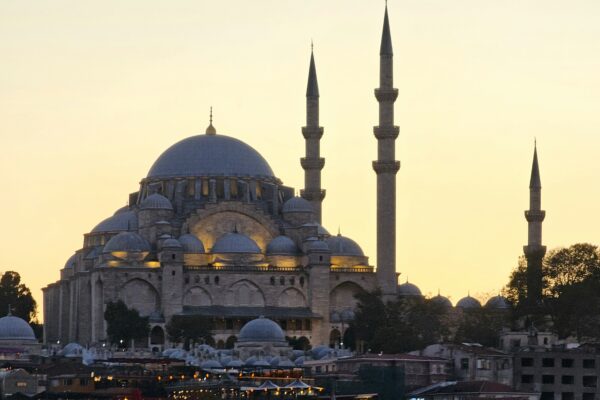“I shoot for the common man,” Mr. Siddiqui wrote, “who wants to see and feel a story from a place where he can’t be present himself.”
“I shoot for the common man,” Mr. Siddiqui wrote, “who wants to see and feel a story from a place where he can’t be present himself.”
Danish Siddiqui photographed tragedy.
His images sear into the mind: the sea-soaked fingers of a Rohingya refugee as she bends to touch the shores of Bangladesh; the closed eyes and prone forms of Covid-19 patients in a Delhi hospital. His photograph of Mohammad Zubair, who bled through his white clothes as he was beaten by a Hindu extremist mob, opened the eyes of the world to the brutality of the 2020 Delhi pogroms. His work documenting the Rohingya refugee crisis won him the Pulitzer Prize.
Like any good photojournalist, he spent hours researching the people and places he would be photographing before taking on a story. But he also carried with him an empathy that made its way into so many of his shots. Like the worn, hole-filled socks of an aspiring Bollywood actor. Or the expression of an 11-year-old girl peering out from beneath her heavy red wedding veil. Or the creased eyebrows of a son sitting with his elderly Covid-afflicted mother in the backseat of a car.
“I shoot for the common man,” Mr. Siddiqui wrote, “who wants to see and feel a story from a place where he can’t be present himself.”
On July 16, just days before Eid al Adha, Mr. Siddiqui became the victim of tragedy. The Reuters photographer was killed while covering a clash between the Taliban and Afghan security forces. He is survived by his wife and two children.
In a statement, Reuters President Michael Friedenberg and Editor-in-Chief Alessandra Galloni said, “Danish was an outstanding journalist, a devoted husband and father, and a much-loved colleague. Our thoughts are with his family at this terrible time.”
But in India, the reaction to Mr. Siddiqui’s death was far from sympathetic.
Indian Prime Minister Narendra Modi did not acknowledge the tragedy; it was Afghan President Ashraf Ghani who tweeted his condolences to Mr. Siddiqui’s family. Coming from Modi, this isn’t a surprise. He shows a similar indifference towards other atrocities inflicted on Muslims. The mass slaughter of Muslim families in Gujarat in 2002, the violence towards protesters against discriminatory citizenship laws in 2020, and the ongoing lynchings of Muslims for a variety of petty reasons are far as Mr. Modi is concerned.
And on Twitter, his supporters openly support the lack of empathy.
“PM condoles for Indian citizen or citizen from friendly country not for the enemy of the country [sic],” tweeted one user, referring to the common Hindutva claim that Muslims are the enemies of India.
“R u truly that sick… Next u will tweet [that Modi] shud mourne Osama also [sic],” reads a comment on a commemoration post.
“He should be thankful to the bullet which sent him to Jannat,” claimed another user.
Another wrote, responding to a journalist expressing her condolences, “We won’t even care for you if something happens similar to what happened to him.”
“No need to do a tweet for those who tried to tarnish the image of [the] country, and treated terrorists as their brothers,” declared another.
And yet these tweets are tame compared to a photograph of Mr. Siddiqui’s dead body, which was circulated by Hindu nationalist Twitter shortly after his death. After the image was flagged for harassment, several users tweeted that this was an instance of “liberal hypocrisy.”
After all, if pictures of Hindu funeral pyres are allowed, why not pictures of a reporter’s corpse? Articles and posts on his death are rife with comments declaring that by virtue of his journalistic work, Mr. Siddiqui hated Hindus, “undermined [India] at every step,” and was a hero to leftist Islamists.
“Selling pictures of burning pyres in India makes you [a] top photojournalist,” one sarcastic tweet reads.
Danish Siddiqui did take pictures of funeral pyres as part of his coverage of the Covid-19 pandemic. And yet he is far from the only photojournalist to do so. The New York Times, the BBC, National Geographic, CNN, and AP News have all published images of pyres and shrouded bodies to illustrate the overwhelming loss of life in India during the pandemic. Danish Siddiqui’s photographs are of a similar nature; they do not depict dead bodies, and therefore do not violate Twitter’s rules of harassment.
The outrage against Mr. Siddiqui as opposed to other photojournalists seems to be more about the fact that he was a Muslim. Twitter users demand proof that he ever denounced the Taliban. They call the Taliban his “brothers.” They refer to him as a “dog,” a terrorist-sympathizer looking to undermine Modi’s regime – namely because drew attention to the government’s mishandling of the Covid-19 crisis, a failure so severe that it resulted in cremation sites nationwide having to burn pyres late into the night.
Muslim journalists all over India are faced with this blatant hatred – attacked for reporting the government’s failings, and threatened for their identity. Reporter Mohammad Ali describes, in a terrifying Baffler article, how “reporting on people who could kill you tomorrow is a harrowing experience. A day of reporting would lead to a night of uncertainty, pain, fear, trauma, anger.” He speaks of receiving death threats from Hindu nationalists, being called slurs, and living with near-constant anxiety. He recounts the decline of India into a hatred so normalized, everyday families are circulating rhetoric that is almost genocidal in nature.
“Most Indian Muslim journalists I know are facing depression and trauma,” he writes. As such, it’s no surprise that this year, India ranks 142 on the World Press Freedom Index: 3 places behind South Sudan, 20 behind Afghanistan, and 26 behind Guatemala.
And yet even as India sinks deeper into hatred and fascism, there is no cheapening Danish Siddiqui’s work as a journalist. His images shock and create emotion; they inform and they educate; but most of all they capture the hidden corners of the human experience, both in India and abroad.
The world needs more reporters as brave, bold, and thoughtful as Danish Siddiqui.
Because simply by existing, they fly in the face of everything that fascism represents.





